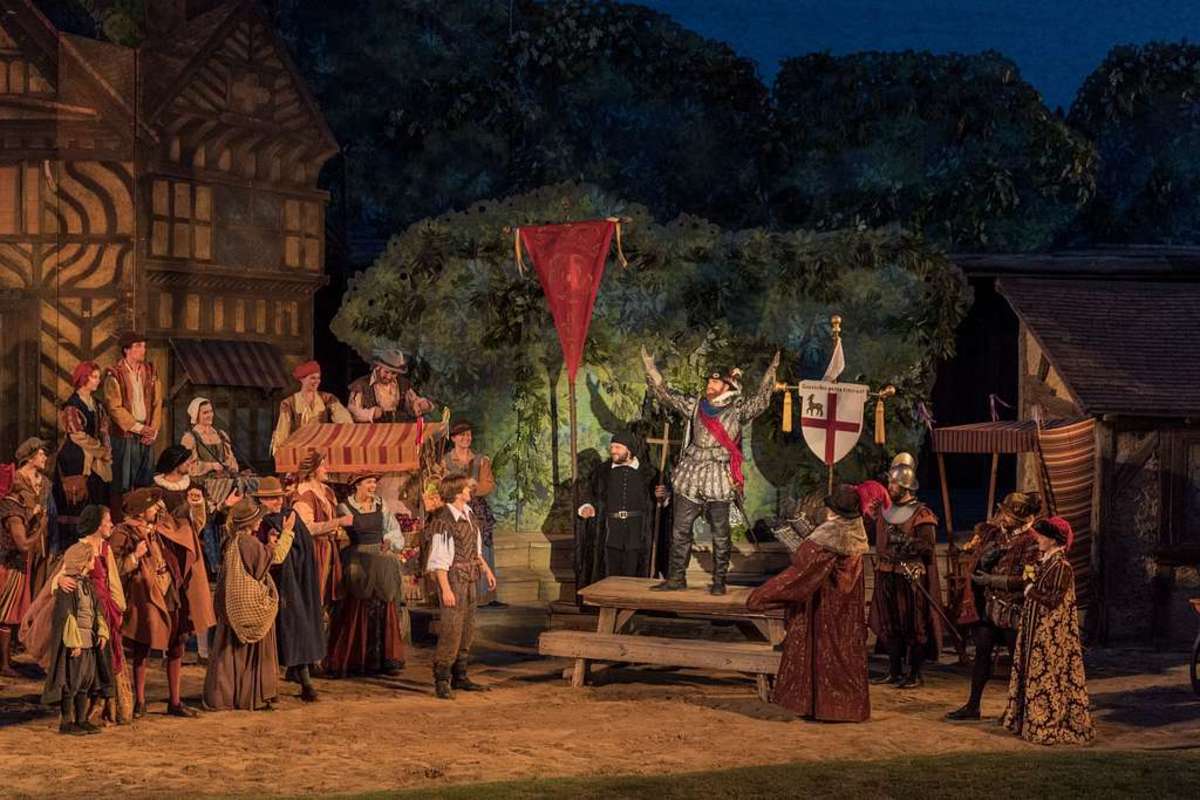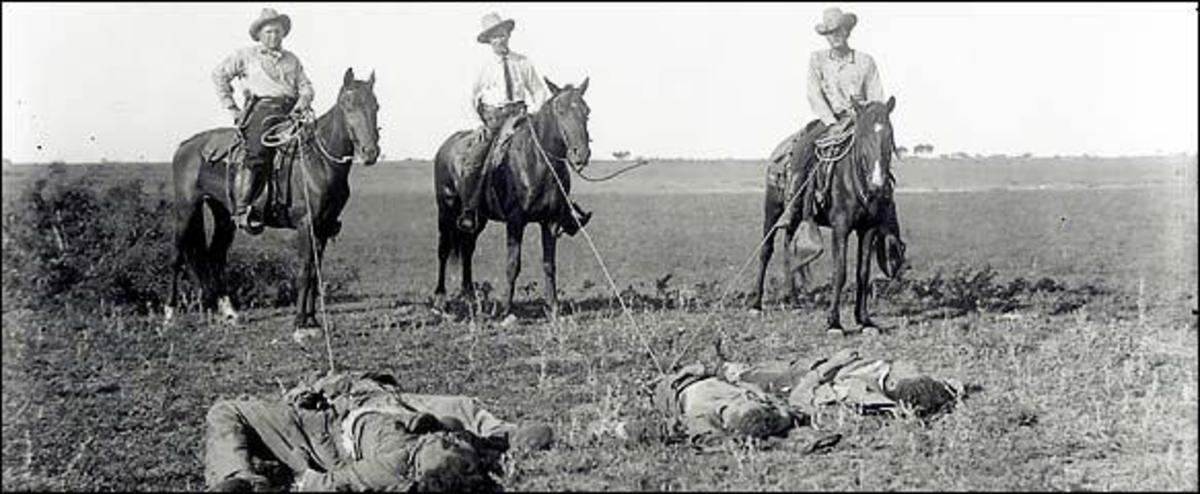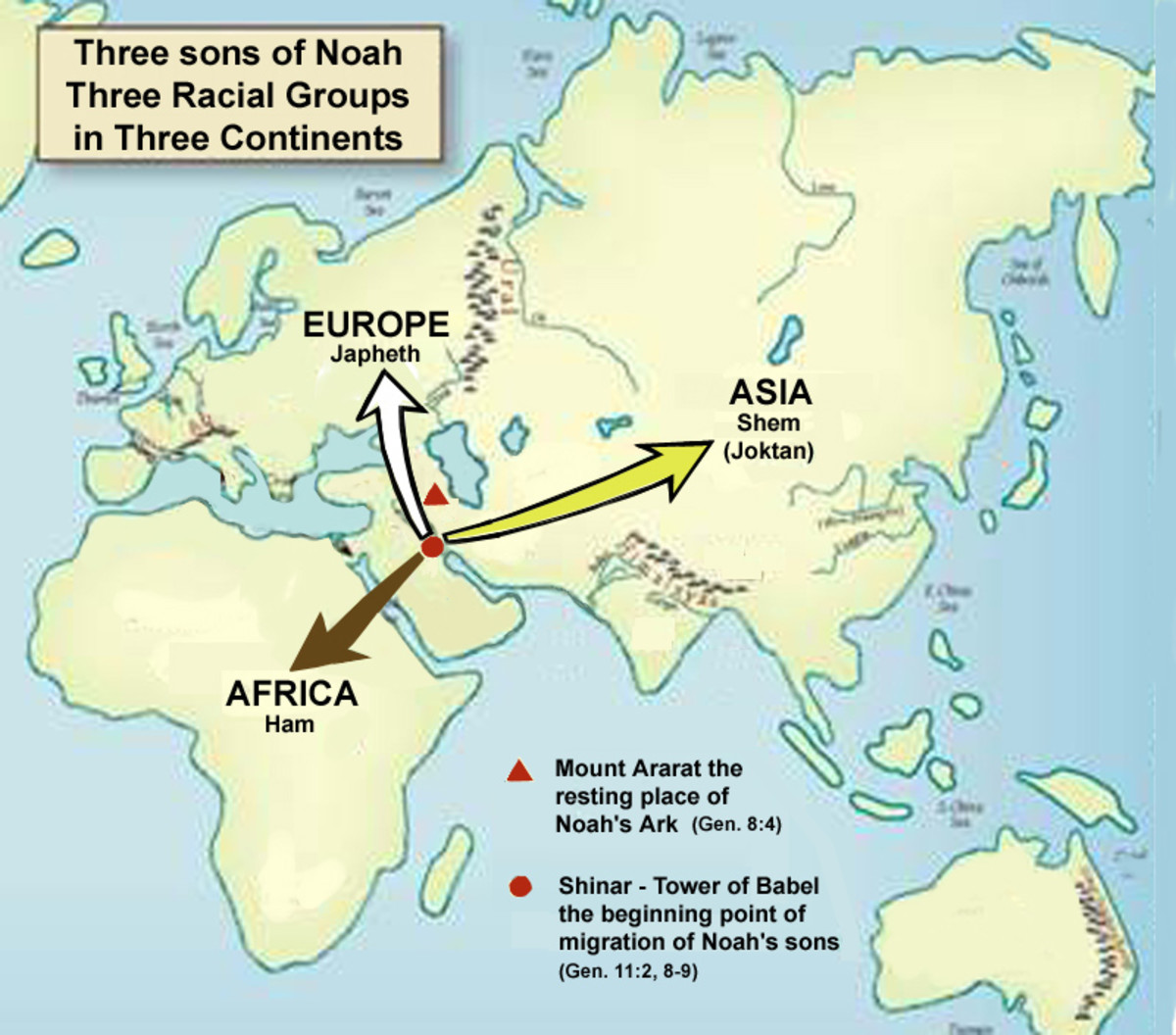- HubPages»
- Education and Science»
- History & Archaeology»
- History of the Americas
Influential Women in History: Harriet Lane was first to be called "The First Lady"
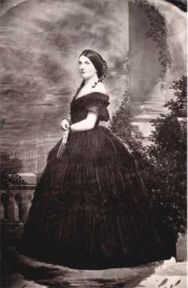
First Iconic First Lady
Until President James Buchanan arrived at the White House, presidential wives were a pivotal part of Washington society and served as hostess at state functions, but they were not well known outside their hometown and DC circles. Due to household obligations, travel difficulties, and the sickly Washington climate, several presidential wives rarely were seen in Washington.
Harriet Lane changed all of that. The charming, well-educated niece of our nation's only bachelor president served as Buchanan's White House hostess and became not just the center of Washington society but influenced fashion and culture throughout the United States, obtaining the same iconic stature to which Jacqueline Kennedy rose a hundred years later.
Following Dolley Madison, whose activities in the White House were precedent setting, Harriet was only the second woman in the White House to advocate for a social cause. Her work for pediatric hospitals, prison reform, and the plight of the American Indians continued throughout her life. In response, the Chippewa named her "the Great Mother of the Indians."
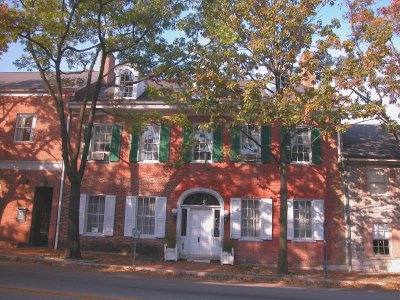
An Orphan & Her Uncle
Born on May 9, 1830, in Mercersburg, Pennsylvania, Harriet was the sixth of the seven children of Buchanan's favorite sister Jane and her husband Elliot Lane. The Lane children were raised in a red brick Federal-style home across the street from her maternal grandfather's mercantile store and home.
When Harriet was only nine years old, her mother died. Just two years later, her father died, leaving as orphans 11-year-old Harriet and her 15-year-old sister Mary. The two girls required an adult guardian and requested their favorite uncle James, whom Harriet called "Nunc." So in 1841, lifelong bachelor Buchanan became guardian of two nieces. At the time, Buchanan was serving as a U.S. Senator from Pennsylvania and was often in Washington, so he sent the girls to a private boarding school in West Virginia for three years, followed by two years of finishing at the Visitation Convent in Georgetown.
Harriet was a spontaneous, intelligent young woman, and her proud uncle debuted her to Washington society while he was Secretary of State to President Polk in the late 1840s. Mature and poised beyond her years, Harriet was a popular addition to Washington's society. She was so mature, in fact, that at the young age of 23, she accompanied Buchanan to London, upon his appointment as President Pierce's U.S. Minister Plenipotentiary to the Court of St. James (aka Ambassador to Great Britain).
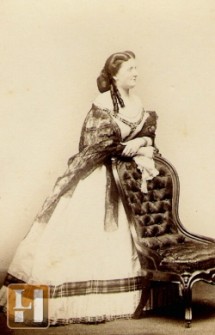
London
Lane's popularity in Washington continued in London. Arriving in 1854, she quickly became a fixture in London's most prominent social circles. She and her uncle frequently dined with the royal family, including Queen Victoria and her son Prince Edward.
The Queen was impressed with Harriet and even bestowed on her the title "Honorary Ambassadress," which is reserved for ambassadors' spouses. The friendship that thrived between the royals and Buchanan and Harriet was not only a social triumph for Harriet but an important diplomatic tie for the United States. During Buchanan's presidency, Queen Victoria sent crown-prince Edward to Washington for a visit, marking the first time that British royalty had ever set foot on American soil. During the Civil War, the Queen and British government refrained from recognizing the Confederate States as a nation, a recognition which could have altered the course of the war if it had been granted.
Harriet received two marriage proposals while in London, but followed her uncle's advice to not marry early.
Shortly after her return to the U.S. in 1855, Harriet's sister Mary died in San Francisco, bringing death and grief into Harriet's life yet again.
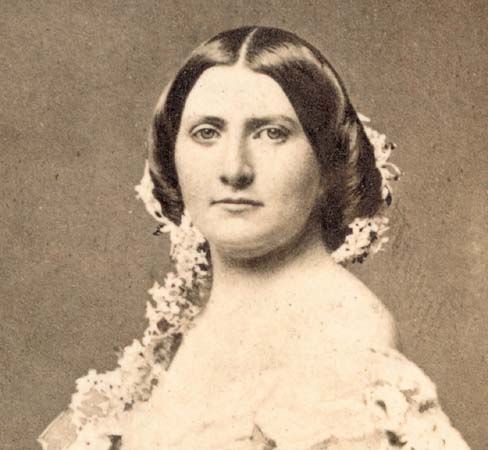
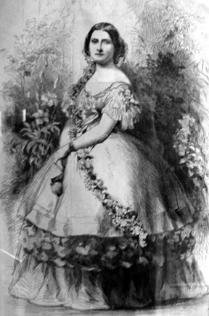
A Breathe of Fresh Air
President Buchanan's predecessor, Franklin Pierce, and his wife came to Washington only a few weeks after the tragic loss of their only surviving child in a train accident. The loss of their 11-year-old boy followed the infant and toddler deaths of their other two sons and left the Pierces in a state of shock and sorrow. Mrs. Pierce was never the same again--and the Washington social seasons were on hold.
In 1857, after four years of a grave, mournful White House, Washington looked forward to reinvigorated social seasons and energized White House parties. Buchanan and Lane did not disappoint, starting with Harriet's scandalous, low-cut European inauguration gown festooned with a garland of flowers running down her ample chest and diagonally across her hips. The dress was the talk of Washington, with bodices dropping 1- to 2-inches overnight. Four years later, Mary Todd Lincoln copied the dress for her inauguration.
Death reared its scythe in Harriet's life again when her older brother Elliot, who had served as her uncle's secretary, died shortly following the inauguration. After a socially acceptable mourning period, Lane resumed hosting White House parties and enthusiastically participating in Washington society, establishing a level of entertaining never before seen in the White House. She maintained a high visibility and was often on her uncle's arm.
No Washington guest list was complete without her. As a society columnist once wrote, "There is no more elegant figure in the official and social gatherings during the season than the niece of President James Buchanan." The press corps adored the vivacious Harriet, and she soon became the most admired woman in the country. Ships were named for her (the United States Coast Guard is currently on its third USS Harriet Lane, commissioned in 1984). Songs were dedicated to her (including "Listen to the Mockingbird").
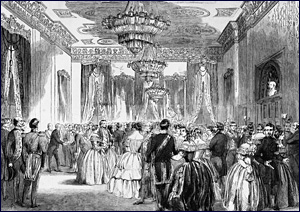
More than a Pretty Face
Harriet was more than just a socialite. In addition to the parties, fashion, and music, she was deeply interested in art, beginning her own personal collection while in London. Her interest in Native American art helped spark her life-long advocacy for Native American welfare and health care. Harriet become the first politically active first lady since Dolley Madison, as she pushed for and won a ban on liquor sales on Chippewa Indian reservations. She also became active in the movement to establish a national art gallery and helped institute a school for the blind in New York State. Harriet also used her position to advocate for improvements in hospital and prison conditions.
Bearing in mind the escalating tensions between different political parties and regions in the late 1850s, Harriet was adept handling complex seating charts for White House dinners and functions, to which she regularly invited different artists, authors, and musicians.
Our First Official "First Lady"
Until Harriet arrived in the White House, presidential wives, or, in the case of widowed Jefferson and Jackson, daughters or daughter-in-laws, were addressed as the individual women preferred. Some requested to be called "Mrs. President" while others requested "Lady" or even "Mrs. Presidentress."
The term First Lady was originally used in 1849 by President Zachary Taylor in a eulogy he gave at the funeral of DC society's beloved Dolley Madison, who was First Lady to her husband James Madison, our 4th president, and an on-and-off hostess in the widowed Jefferson's White House. In 1860, First Lady was again used, this time in Frank Leslie's Illustrated Monthly to describe Harriet ("The Lady of the White House, and by courtesy, the First Lady of the Land"). Once consistently applied to Harriet, the term retroactively applied to all presidential wives or hostesses and finally answered the messy question of what to call the president's wife or leading lady.
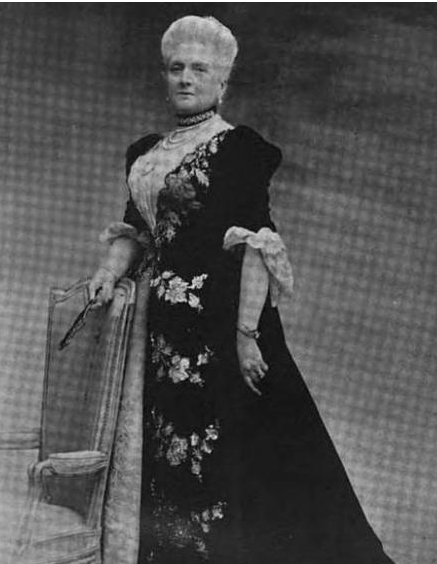
Post-White House & Later Years
Harriet Lane served her uncle and the Buchanan White House with dignity and grace during the difficult years that led up to the Civil War. Buchanan also served with the best of his very able abilities, but this was a climate unlike any other experienced by a president or federal government. Like the four presidents before him, Buchanan was not re-nominated by his party to run for president. At Lincoln's inauguration, Buchanan is quoted as saying: "If you are as happy, my dear sir, on entering this house as I am in leaving it and returning home, you are the happiest man in this country."
Buchanan and his niece retired to his estate, Wheatland, in Lancaster County, Pennsylvania. Buchanan wrote his memoirs, the first president to ever do so. Published in 1866, the book was his defense of his presidency.
At the age of 35, Harriet married long-time boyfriend Henry Johnston, who had pursued her since her teenage years. Johnston was a banker and lawyer from a wealthy Baltimore family. The couple were married in January 1866 and moved to Baltimore where they had two sons, James Buchanan Johnston and Henry Elliot Johnston, II.
Having endured more sorrows than many her age, Harriet was fated to live through even more. Buchanan died in June 1868, leaving his Wheatland to Harriet, which she continued to use as a summer home. In 1881, her eldest son died of rheumatic fever; followed by his brother, just 18 months later, from the same disease. Only two years later, in 1884, Harriet's husband died unexpectedly from pneumonia. Shocked and in mourning, Harriet sold both Wheatland and the family's Baltimore home and moved to Washington, D.C.
Despite having endured so much tragedy in her 54 years, Harriet soldiered on, perhaps propelled by her strong will and personality, perhaps by her dedication to leaving a lasting legacy for the lives of her loved ones.
Upon her return to Washington, Harriet rejoined the DC society she so enjoyed more than two decades earlier. In her senior years, she was kept company by her niece, May Kennedy. Harriet became a favorite guest of the new Democratic First Lady, Frances Folsom Cleveland. Her attendance at and hosting of spectacular Washington society galas, receptions, and cultural and charity events kept her in the weekly society pages for another 16 years.
In 1902, just less than a year before her death, Harriet made a trip back to England to attend the coronation of the former Prince of Wales, now King Edward VI. It was the last mention of Harriet in the newspaper society pages and a fitting conclusion to a stellar social career. In July 1903, Harriet passed away from cancer at her summer house in Rhode Island. She is buried in Baltimore next to her husband and sons.
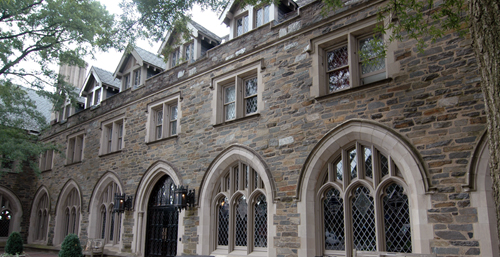
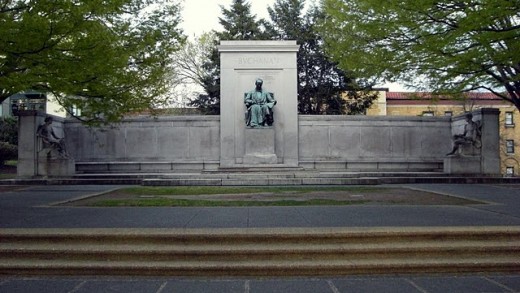
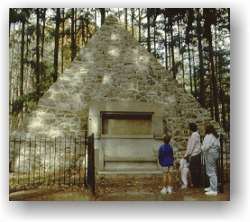
The Lane Johnston Legacy
At the time of their younger son's death in 1882, Harriet and Henry decided to create a lasting tribute to their boys by establishing a children's hospital in Baltimore. This was an immense advancement on behalf of children's health because at the time, pediatricians and children's hospitals did not exist. With their donation, the Harriet Lane Home for Invalid Children was built and opened in 1912. By 1930, the researchers associated with the Harriet Lane Home and Johns Hopkins University had discovered that sulfa drugs could prevent the fatal cardiac side effects of the rheumatic fever that killed the Johnston children. Today, the hospital continues serving the children of Baltimore and the nation as Hopkins Children's. The Harriet Lane Clinic provides outpatient pediatric care for Baltimore children, treating more than 8,000 children and booking more than 20,000 appointments per year.
Johns Hopkins continues to publish the Harriet Lane Handbook: A Manual for Pediatric House Officers, which was first published in 1950. It is now in its 18th edition and is available in print and online for mobile use.
When Harriet sold Wheatland and her home in Baltimore to move to Washington, she sold many of her possessions. She bequeathed most of the pieces in her personal art collection to the Corcoran Gallery in Washington, until the time that the government could build a national art gallery. The Corcoran was forced to decline her bequest because the it could not afford to physically maintain the collection as stipulated in Harriet's will. After litigation by her estate executors, a federal court ruled the Smithsonian Institute met the requirement to be considered a national art gallery. Her bequest of nearly 30 pieces of art became one of the Institute's first major acquired collections. According to what is now the Smithsonian American Art Museum, Harriet's 1903 bequest reawakened the Smithsonian's interest in art and inspired further private collectors to bequeath pieces to the museum.
Harriet also bequested money for the building of the St. Albans School in Washington, DC, an all-boys school, and for a scholarship endowment to educate boys in the National Cathedral Choir at St. Albans. The school opened in the fall of 1909, with 59 boys in attendance. The school now educates more than 500 boys in grades 4 through 12, with more than 20 serving in the Cathedral Choristers. Its sister school is the National Cathedral School for Girls. St. Albans' original building, the Lane-Johnston Building, is still used as a dormitory today.
Finally, Harriet left $100,000 to a James Buchanan Monument Fund for the purpose of building a monument to her uncle in D.C. and/or at his birthplace, Stony Batter, Pennsylvania. If the funds were not used within 15 years, the entire amount reverted to the Harriet Lane Home.
Time almost ran out for a Washington memorial, as congressmen born after Buchanan was president continued to deny the memorial and to diminish or deny the president's long record of public service. Finally, a Democrat-controlled House passed a measure approving a memorial to Buchanan, although that even initially stalled in the Senate. Eventually, the memorial passed both houses and was finished in 1930. It is located in the Meridian Park-Malcolm X Park on 16th Street. While 16th was supposed to be the Avenue of the Presidents, Buchanan's statue remains the only presidential monument on that street.
Pennsylvania moved much quicker to remember its native son. Throughout her later life, Harriet had made attempts to buy the land where her uncle was born in the Appalachian pass near Mercersburg. The owner continually refused to sell. After Harriet's death, the owner's descendants sold the beautifully wooded 18 acres to the monument fund. By winter of 1907/08, a gray granite pyramid monument was finished. The acreage was designated a state park for the people of Pennsylvania to enjoy.
Learn More about James Buchanan
- Homes of the U.S. Presidents, Part 3: Pre-Civil War
Includes information on the life, presidency and homes of President James Buchanan.

